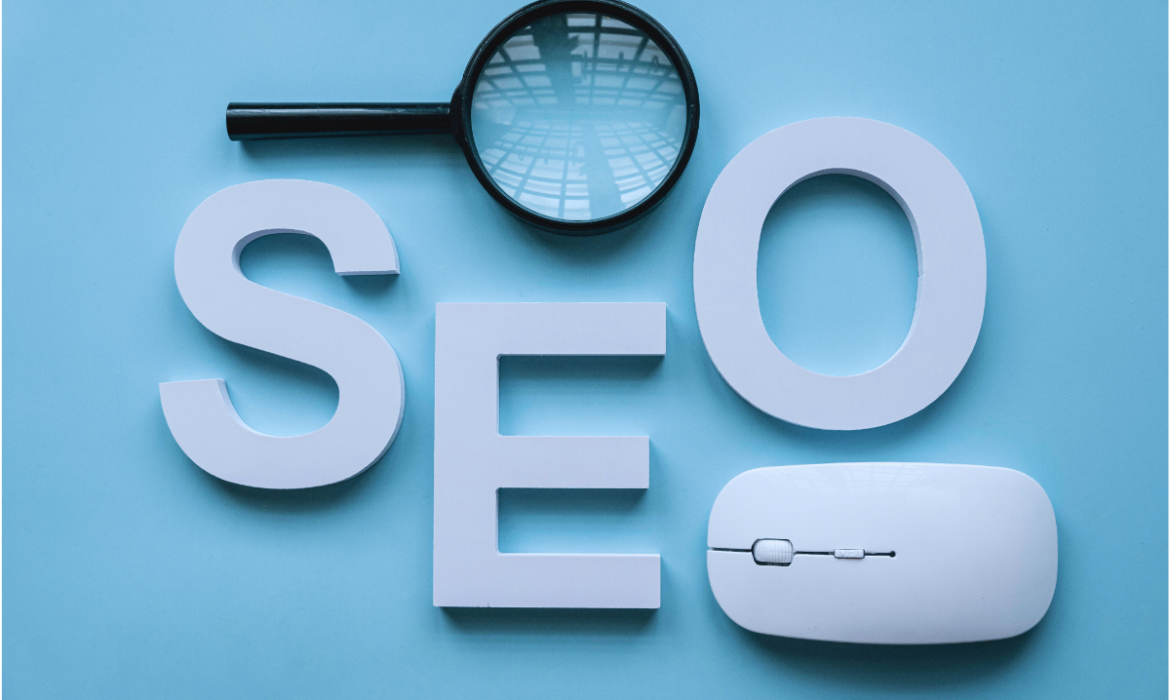The relevance of user experience in SEO
The relevance of user experience in SEO
User experience ( UX) is a key factor in website positioning, as Google prioritizes sites that offer smooth navigation, fast loading times, and relevant content. An intuitive, structured, mobile-optimized design improves user retention and reduces bounce rate, which positively impacts SEO.
Using clear headings, strategic internal links, and quality content helps improve user interaction with the page. Additionally, elements such as well-placed calls to action and efficient response times increase the possibility of conversion.
Google analyzes metrics such as time on page, navigation depth, and interaction with content to determine the quality of the user experience . Sites with good accessibility, responsive design, and optimized structure achieve better positioning in search results.
Investing in a user experience- focused strategy not only benefits SEO, but also boosts visitor trust and increases conversions.
How loading speed influences web positioning
How loading speed influences web positioning
Loading speed is a key factor in website positioning, as Google considers it an important criterion for page ranking. A slow site creates a poor user experience, increasing bounce rate and reducing retention. Search engines prioritize pages that load quickly, which improves visibility and organic traffic.
Optimizing images, reducing unnecessary scripts, and using quality hosting are key strategies to improve loading speed . A fast website not only benefits SEO, but also increases conversion and user satisfaction.
Using technologies such as file compression, caching, and a content delivery network (CDN) can reduce wait times and improve site performance on different devices. Speed also influences page indexing, as Googlebot crawls optimized sites more efficiently.
Investing in improving loading speed not only impacts positioning, but also strengthens the credibility and competitiveness of the business in the digital environment.
Responsive web design: key to improving conversion
Responsive web design: key to improving conversion
Responsive web design is an essential strategy to ensure an optimal experience on any device. A responsive site allows users to navigate seamlessly from mobile, tablet, or desktop, improving retention and increasing conversions. Google prioritizes pages with responsive design, which improves search engine rankings and generates more organic traffic.
A well-optimized design includes responsive images, fast loading times, and an intuitive structure. It also makes it easy for users to interact with buttons and forms designed for any screen. Smooth navigation reduces bounce rates and motivates visitors to complete key actions like subscriptions or purchases.
Another important aspect of responsive web design is its impact on accessibility. A properly responsive site allows more people, including those with disabilities, to interact with the content without difficulty. This not only improves usability, but also contributes to a better reputation and user trust in the brand.
Investing in responsive web design is a strategic decision that optimizes the user experience and maximizes the performance of the site. In a constantly evolving digital world, having a responsive website is a key competitive advantage for any business.
Link building strategies to improve your web authority
Link building strategies to improve your web authority
Link building is a fundamental technique for increasing a website’s authority and improving its search engine rankings. Obtaining quality links from relevant sites helps to strengthen a page’s credibility and generate more organic traffic. An effective strategy begins with creating valuable content that others will want to share, such as in-depth articles, case studies, or engaging infographics.
Guest blogging is another key tactic in link building . Collaborating with authority sites in your industry allows you to gain quality backlinks and expand your brand reach. It is also important to diversify your link sources, making sure they come from different domains rather than concentrated on a few sites.
Unlinked brand mentions can become effective backlinks. Contacting site managers who mention your business without linking to it and requesting a link is a simple and effective strategy. Additionally, participating in business directories and local listings can improve your business’s visibility and bring in valuable links.
Using digital PR is also a powerful link building tactic . Issuing press releases about events, product launches or company achievements can generate mentions and links in media outlets. Interacting on forums, communities and social media also helps to increase online presence and attract links organically.
Implementing a solid link building strategy takes time and effort, but the long-term results in terms of positioning and web authority are worth it. Going for quality links rather than quantity is the key to success in this practice.
The Importance of Local SEO for Small Businesses
The Importance of Local SEO for Small Businesses
Local SEO is a key strategy for small businesses to increase their visibility in geolocalized searches. By optimizing their online presence, businesses can attract nearby customers and improve their ranking on Google. Factors such as Google My Business optimization, using location-based keywords, and obtaining positive reviews play a key role in this process.
Having a well-optimized Google My Business listing allows your business to appear in search results and on Google Maps, making it easier for potential customers to find key information such as hours, address, and contact information. Additionally, responding to reviews and keeping your data up to date helps build trust and improve your business’ reputation.
Localized content also plays a role in local SEO success . Creating website posts that include region-specific terms, local events, and collaborations with nearby businesses increases relevance in searches. Additionally, it’s critical to ensure that your website is optimized for mobile devices, as many local searches are done from smartphones.
Local links, such as mentions in business directories, trade associations, and local news sites, strengthen a business’s authority in its area. The more references a business has on trusted pages in the region, the greater its credibility with search engines.
Local SEO not only helps improve the visibility of small businesses, but also boosts their growth by attracting customers interested in their products or services within their community. Implementing the right strategies can make all the difference in an increasingly competitive market.
How to Design a Website That Converts Visitors into Customers
How to Design a Website That Converts Visitors into Customers
An effective website should not only be attractive, but it should also be optimized to generate conversions. The key is usability, intuitive design, and a clear structure that guides the user towards the desired action. Loading speed is critical, as a slow site can cause visitors to leave before engaging with the content.
The design should be responsive, that is, adaptable to any device, to ensure a fluid experience on mobile and desktop. In addition, including clearly visible and persuasive calls to action (CTAs) facilitates conversion. Forms should be simple and ask for only essential information to prevent users from abandoning the process.
Quality content is another key pillar. A clear message, with persuasive texts focused on user benefits, reinforces trust and motivates action. Integrating testimonials, reviews and success stories also helps to build credibility and reduce uncertainty for potential customers.
Using analytics tools allows you to measure visitor behavior and constantly optimize your strategy. Identifying which pages have the highest conversion rate and which need improvement helps maximize results. Implementing A/B tests with different versions of elements such as buttons, images, or text can make a huge difference in website performance .
Investing in an SEO-optimized structure is also crucial. Good search engine positioning will attract quality organic traffic, increasing the chances of conversion. Using relevant keywords, improving loading speed, and offering valuable content are essential strategies to stand out in search results.
Designing a website that converts requires planning, constant testing, and a clear user focus. With an attractive design, optimized functionality, and strategic content, it is possible to transform visitors into loyal customers.
Digital marketing trends that will boost your business
Digital marketing trends that will boost your business
Digital marketing is constantly evolving, and adapting to its trends is key to business growth. Content personalization, powered by artificial intelligence, allows for better audience segmentation and more relevant experiences. In addition, digital marketing based on short videos and live broadcasts is revolutionizing the way brands communicate, achieving greater engagement and loyalty.
SEO remains essential, and optimizing for voice searches becomes indispensable with the rise of virtual assistants. Adapting content to a more conversational language improves positioning and accessibility. E-commerce also stands out with strategies such as marketing automation and the use of chatbots, which improve the customer experience and increase conversion.
Data-driven advertising campaigns allow for more precise targeting, optimizing resources and maximizing results. In addition, interactive content, such as surveys and augmented reality experiences, generates greater connection with the public. Transparency and authenticity are also essential, as consumers increasingly value trust in brands.
Applying these trends in digital marketing will help strengthen your online presence and improve your business strategy. Staying up to date and adapting to changes is key to success.
Creating optimized content to attract organic traffic
Creating optimized content to attract organic traffic
Creating optimized content is one of the most effective strategies to attract organic traffic and improve search engine rankings. Well-structured, relevant and keyword-optimized content increases the visibility and authority of a website. Publishing articles, guides, case studies and other informative formats allows you to capture the attention of your target audience and improve the conversion rate.
For content to be effective, it must be aligned with users’ needs and interests. Researching relevant keywords and using clear, engaging language improves accessibility and understanding. It is important to avoid term saturation and maintain a natural structure that makes reading easier. In addition, the inclusion of images, videos, and internal links enriches the experience and encourages longer stays on the site.
Technical SEO is another crucial factor in creating optimized content . A well-indexed site, with friendly URLs, fast loading times and responsive design, improves user experience and favors positioning. Correct hierarchization of titles and subtitles, the use of attractive meta descriptions and image optimization contribute to better indexing by search engines.
Generating fresh, valuable content is key to maintaining an engaged audience. Search algorithms prioritize sites that offer fresh, relevant information. Implementing a regular publishing strategy and analyzing content performance allows you to adjust and improve results over time.
Link building is also essential to boost organic traffic. Getting quality links from authoritative sites improves the credibility and relevance of the content. However, it is essential that these links are natural and come from reliable sources, as low-quality links can negatively affect rankings.
Creating optimized content not only attracts more visitors, but also strengthens brand identity and improves user engagement. Well-developed and optimized content can become a long-term strategic asset for any business looking to improve its digital presence.
SEO for business: keys to stand out in search engines
SEO for business: keys to stand out in search engines
SEO for business is essential to improve search engine visibility and attract qualified traffic. A well-executed optimization strategy allows a company to rank high in search results, increasing its conversion opportunities. Factors such as keyword selection, content optimization, and website structure influence relevance and search engine ranking.
Quality content is one of the pillars of SEO for business . Search engines reward those sites that offer valuable, original and well-structured information. It is advisable to use strategic keywords in titles, subtitles and descriptions without falling into the abuse of repetitive terms. In addition, the use of optimized images and relevant videos can improve the user experience and reduce the bounce rate.
Another key aspect is the technical optimization of the website. Loading speed, responsive design and correct indexing of pages all influence positioning. A slow site or one that is not adapted to mobile devices loses opportunities to attract visitors and can be penalized by search engines. Implementing a good internal link structure also helps improve navigation and makes it easier for search engines to understand the hierarchy of the content.
Link building is a fundamental strategy within SEO for businesses . Obtaining links from authoritative websites increases the credibility and relevance of a page. However, it is important to focus on quality links rather than quantity, as links coming from unreliable sites can lead to penalties.
Additionally, local SEO is key for businesses looking to attract customers in a specific location. Optimizing Google My Business profiles, using geolocalized keywords, and obtaining customer reviews all help improve local search presence. This is especially important for restaurants, brick-and-mortar stores, and services that rely on local traffic.
Data analysis is essential for improving your SEO strategy. Tools like Google Analytics and Google Search Console allow you to evaluate your site’s performance, identify opportunities for improvement, and adjust your strategy based on the results. Factors like conversion rate, time on page, and bounce rate offer valuable insights for optimizing your site’s content and structure.
SEO for business is not an instant process, but rather a long-term strategy that requires consistency and constant updating. Implementing good optimization practices, generating valuable content and improving the user experience are actions that contribute to success in search engines.
The importance of web design in user experience
The importance of web design in user experience
Web design is a determining factor in the perception and navigation of users within a site. An intuitive and attractive interface not only improves the experience, but also influences the permanence and conversion of visitors. A well-structured site, with fast loading times and adaptable to mobile devices, generates trust and facilitates interaction.
A good web design should combine aesthetics and functionality. The choice of colors, fonts, and visual elements should be aligned with the brand identity, but without sacrificing usability. A clean and uncluttered design allows users to quickly find the information they are looking for, avoiding frustration and reducing the bounce rate.
Another key aspect is accessibility. A site should be navigable for all types of users, including those with disabilities. Implementing alternative texts on images, clear structures and accessible navigation options improves inclusion and broadens the reach of the target audience.
Technical performance is also essential. A slow or technically buggy website negatively impacts user experience and search engine rankings. Optimizing images, reducing the use of unnecessary scripts, and choosing quality hosting are all key strategies to improve site speed and stability.
In addition, an SEO-optimized web design allows search engines to correctly index the content, increasing visibility and attracting organic traffic. Correct structuring of headings, the use of internal links and a clear information architecture are elements that contribute to better positioning.
The evolution of user behavior also influences web design trends. Today, most visits come from mobile devices, so having a responsive design is essential. A site that adapts to different screen sizes improves accessibility and guarantees fluid navigation regardless of the device used.
Investing in quality web design is a key strategy for digital success. A well-designed site not only improves the user experience, but also strengthens the brand image and facilitates the conversion of visitors into customers.













